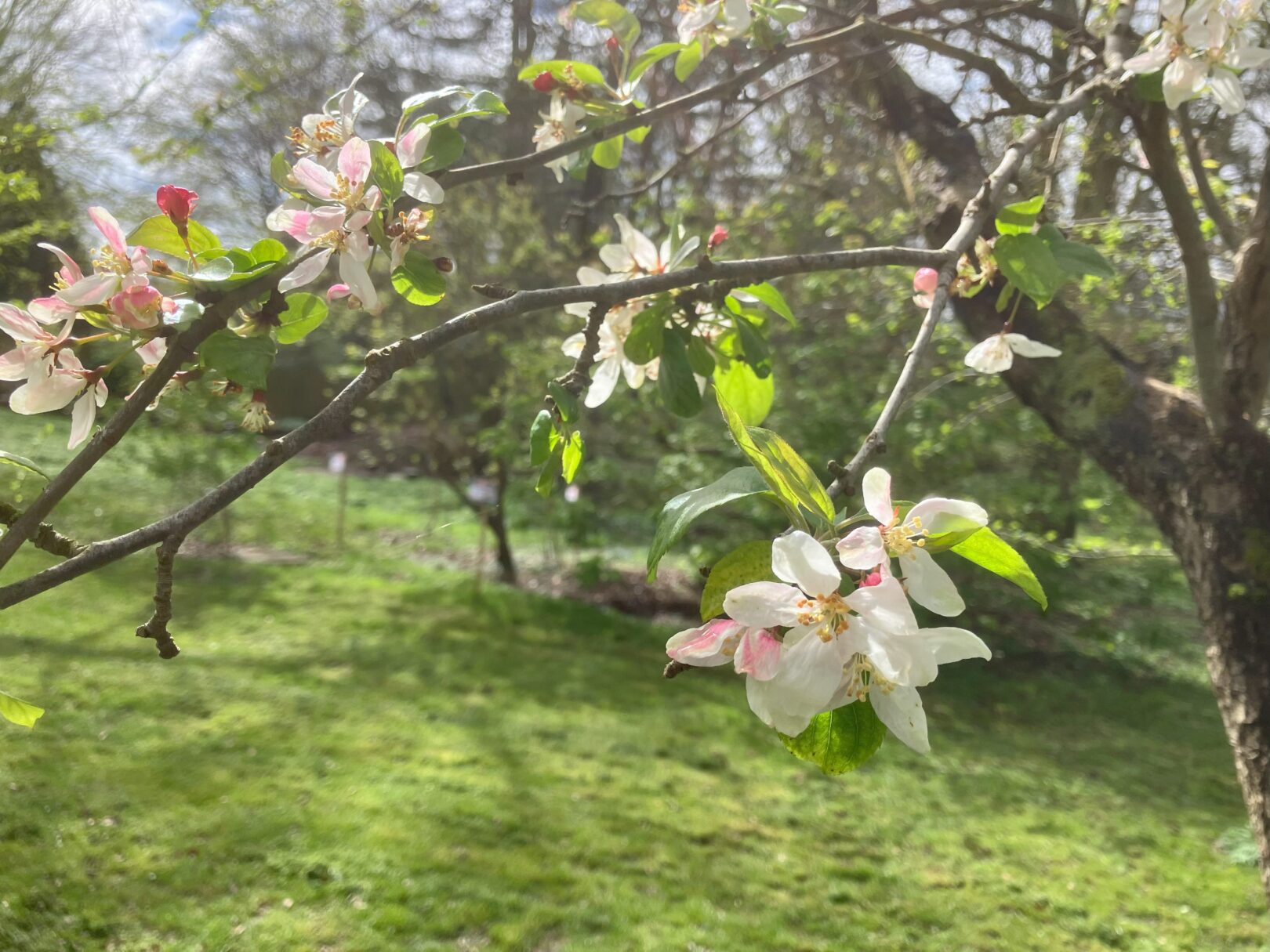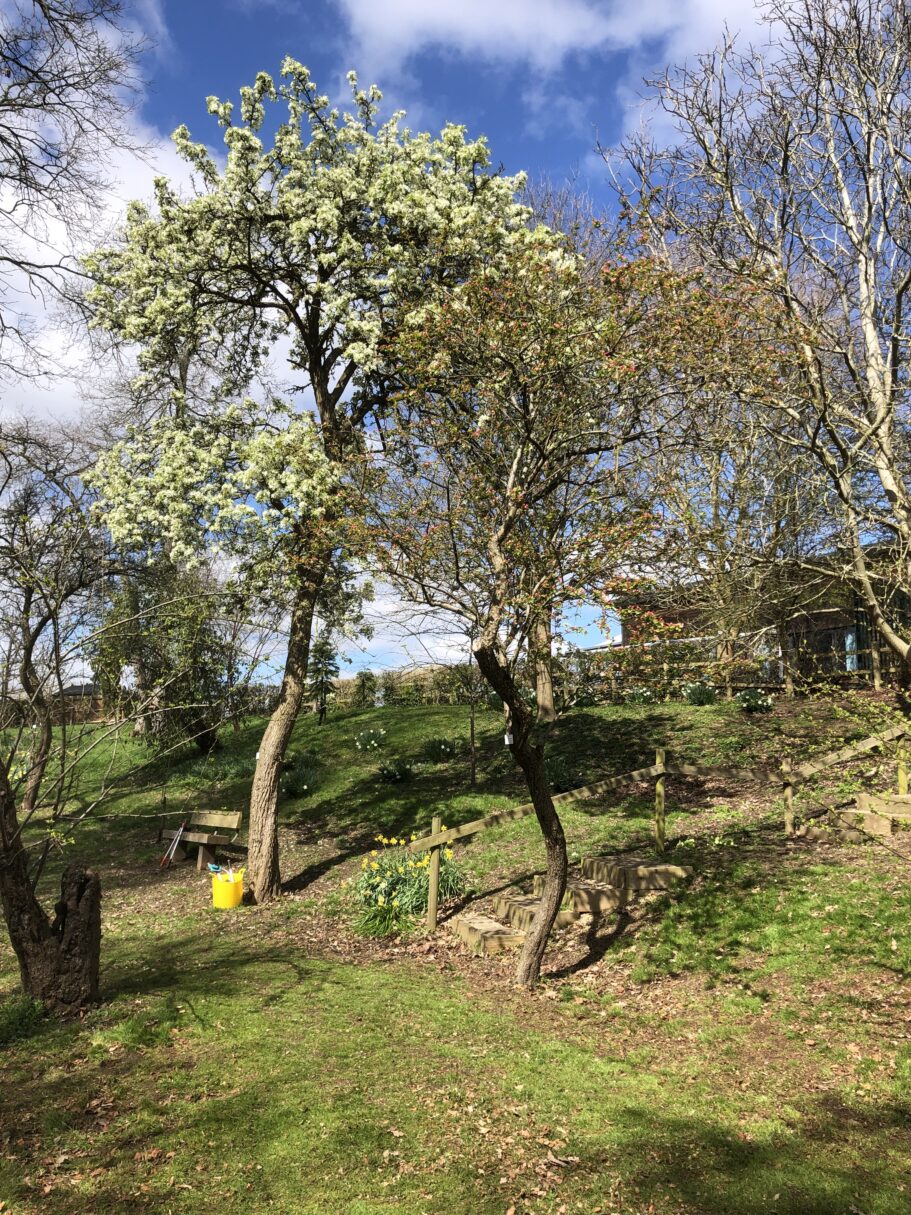#120 SMALL FRUITED SIBERIAN CRABAPPLE
Malus baccata microcarpa

Planted: 1922
This tree is at the east end of the Malus Avenue, near the entrance steps.
| Distribution: | Small fruited form of Malus baccata which is native to Russia, Mongolia, China, Japan, Korea, Bhutan and Nepal. It is common to mixed forests on hilly slopes at elevations up to 1,500 m. Introduced to Europe and North America. Naturalised in the Great Lakes and north-eastern US. |
| Planting Date: | 1922, purchased from Hillier Nurseries, Romsey, Hampshire. |
| Growth Habit: | In gardens it makes a round-headed tree with arching lower branches. |
| Bark: | Arching or overhanging red-brown branches and red-brown buds. The petioles are 2 to 5 cm long, with few glands. |
| Leaf: | Leaves are elliptical or egg-shaped, 3 to 8 cm × 2 cm to 3.5 cm. |
| Flowers: | Pedicels are slender, 1.5 to 4 cm long. They bear white, fragrant flowers of 3 to 3.5 cm in diameter in groups of four to six. Petals are white and egg-shaped, about 2.0 to 2.5 cm long. |
| Fruit: | Fruits are red to yellow and spherical, only about 12 mm cm in diameter. They form dense clusters and resemble cherries from a distance. Flowering occurs in spring, with fruits appearing in September and October. |
| Toxicity: | Not known |
| Potential tree size: | Up to 10 to 14 m high |
| Uses: | As an ornamental for its flowers and fruit. The fruits are edible and are eaten fresh or dried. One of the tallest and most resistant to cold and pest species of its genus, thus is used for experimental breeding and grafting. |
| Commom Names: | Siberian crab apple, Siberian crab, Manchurian crab apple and Chinese crab apple. |
| Introduction Date: | Introduced to Kew from Siberia in 1784. Stock under this name was already in the British nursery trade, which imply an earlier introduction. |
| Anecdotes and Comments: | Has fruit about half the size of type and was considered inferior by W J Bean. |
